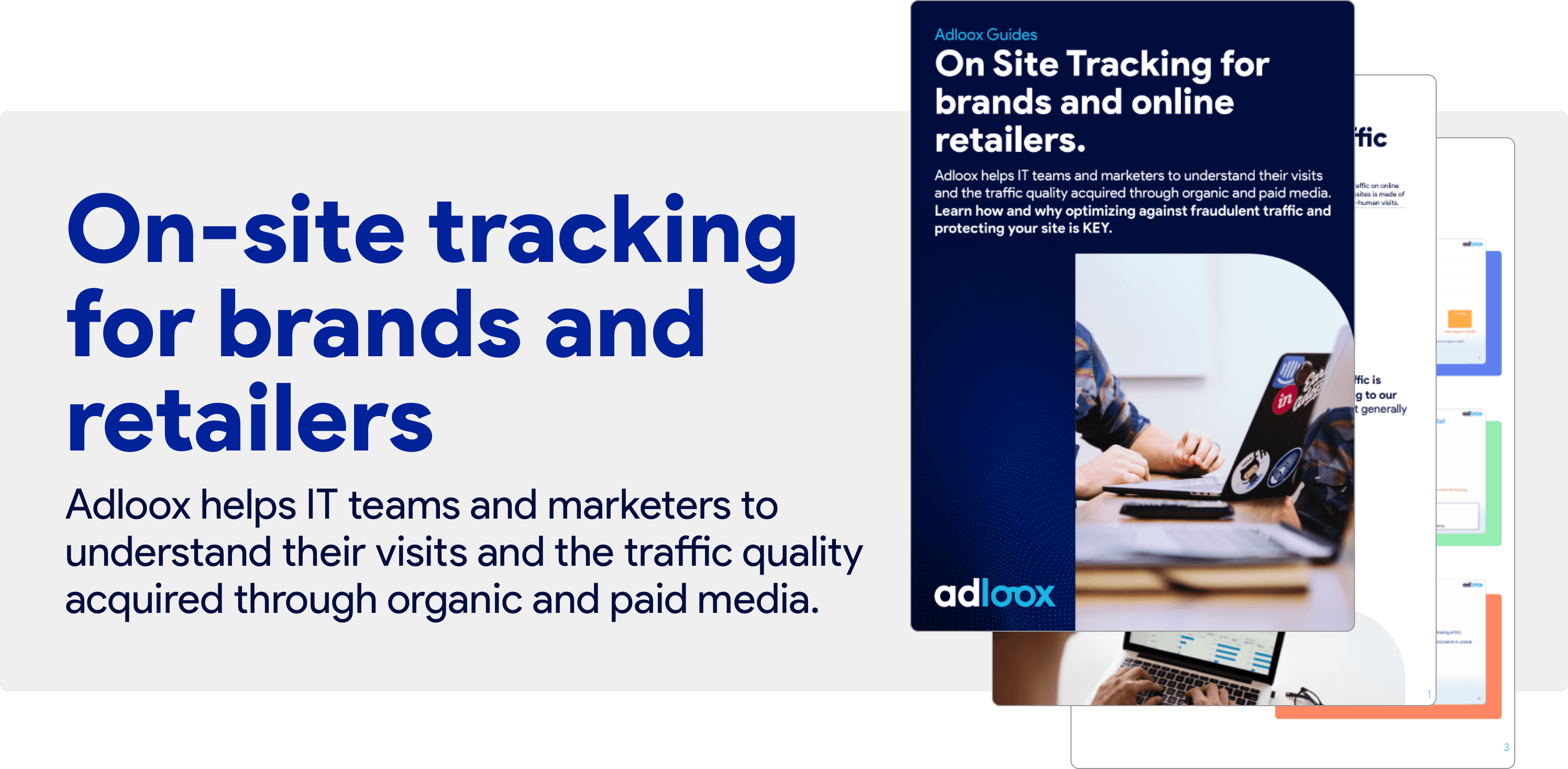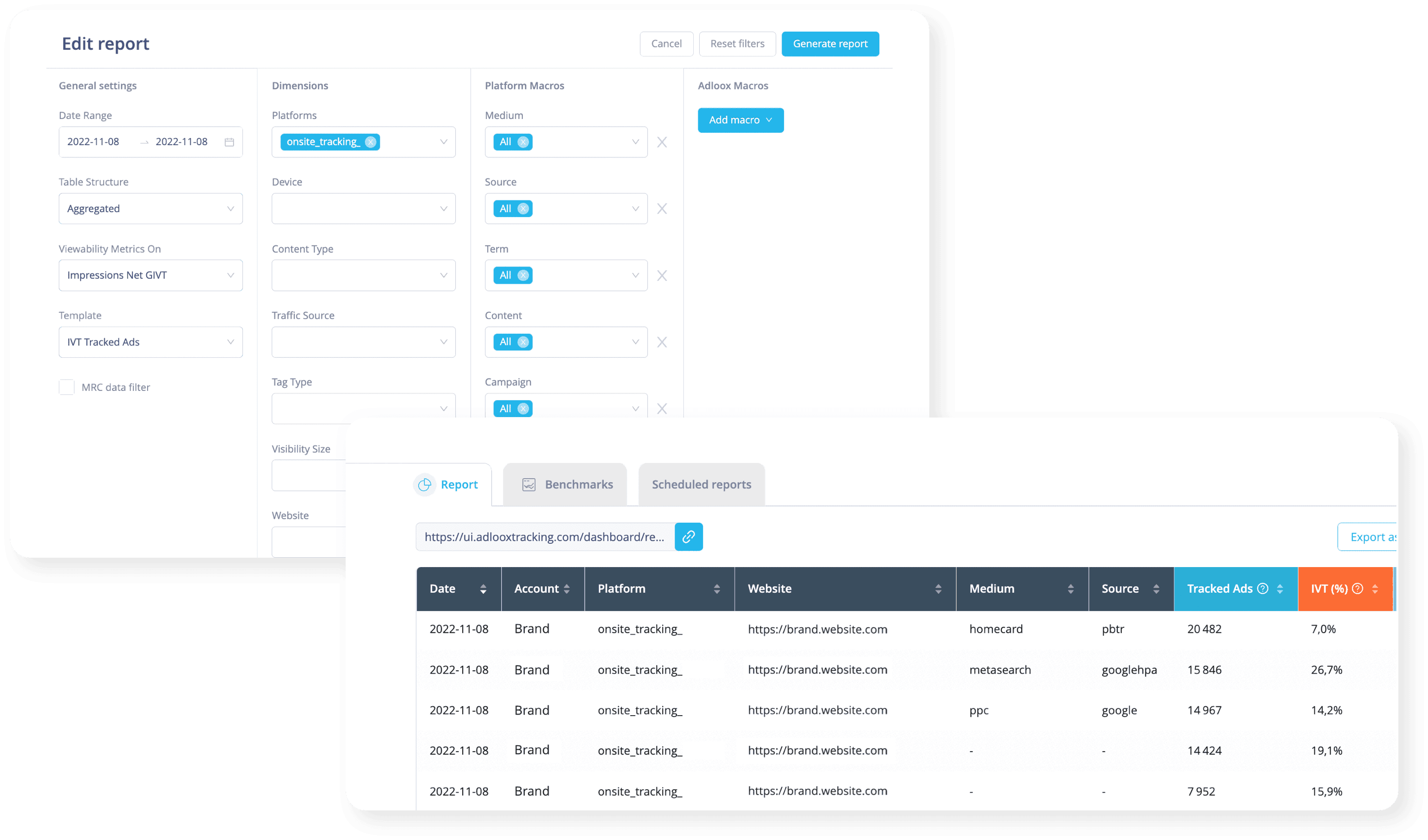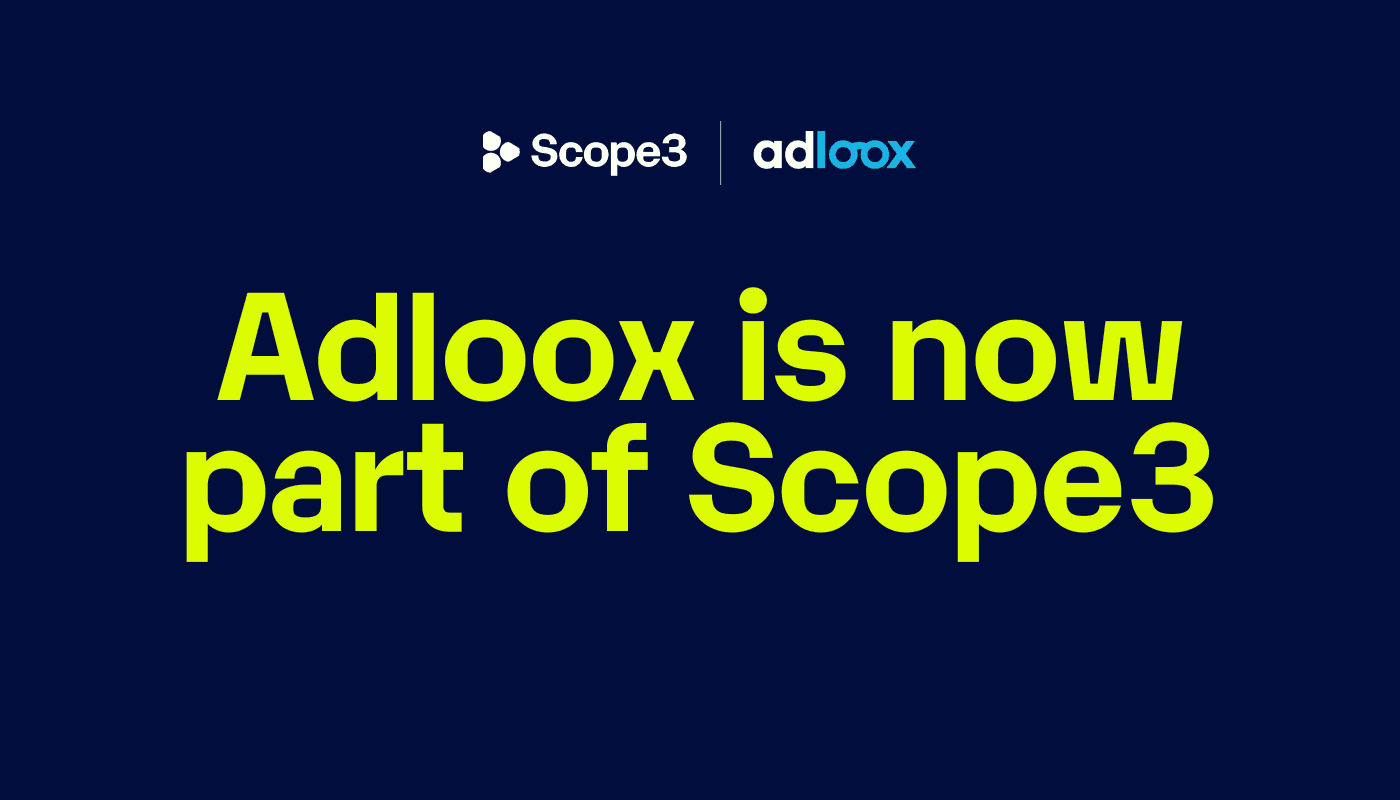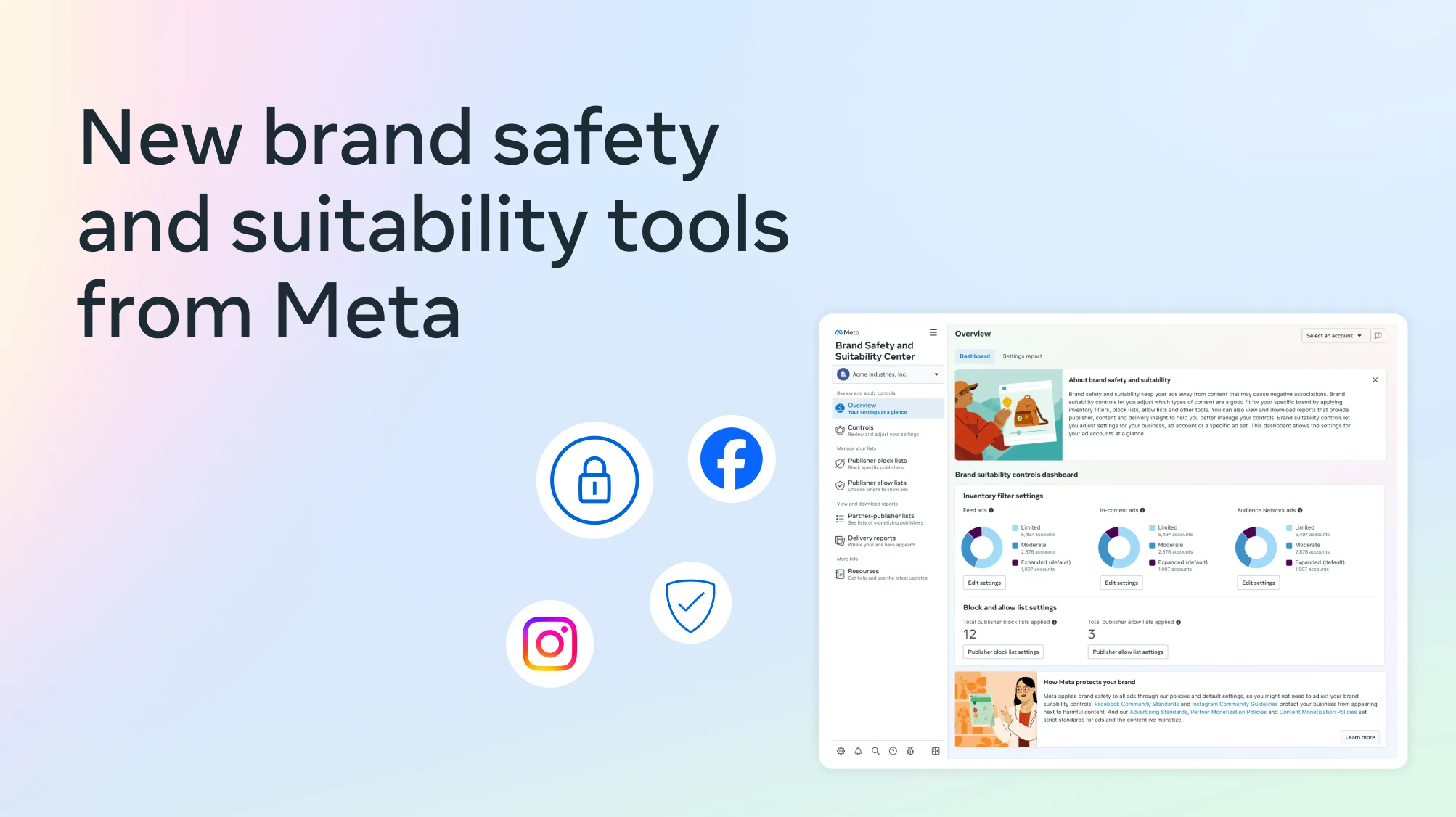Insights
1 juin 2023
Google Analytics is the undisputed leader of website analytics (+86% of all websites monitored), and is unavoidable to marketers. It’s a really powerful tool that can answer many questions about user and traffic activity. But it lacks some key metrics or often needs a lot of drilling to find some specific data, when not simply invisible due to GA’s aggregated output. Digital publishers or big online retailers often encounter a range of difficulties when it comes to managing their website's traffic quality monitoring and visibility issues. Let’s dig in and see how Adloox can be a powerful complementary tool for such needs.
1. Mapping (real) visits and traffic quality
With a large volume of traffic comes an enormous amount of data, as well as a big load of… crap. Marketers need to effectively gain insights into the quality and granularity of their traffic. The inability to reach desired performance objectives is the second most recurring problem in programmatic ops for 45% of US advertisers, according to a 2020 study. Meanwhile, according to Imperva, bots activity accounts for 40% of all ecommerce traffic.
Digital publishers and retailers are multiplying advertising partnerships, sponsored content inserts and sharing on a multitude of very diverse platforms. This automatically multiplies traffic, and therefore the risk of IVT and inefficient impressions. With websites receiving thousands of organic and paid visits per day, ranking and comparing all the channels and partners is part of the marketer’s journey, which can be very challenging, especially with only partial information regarding traffic and visits.
💡 Adloox answer:
Adloox spots everything other analytic tools can’t see: botnet attacks, unnatural bounces rates, inefficient visits, and more. It gives marketers and advertisers full control with the mapping via all UTMs available. You can now identify what is valid, invalid and inefficient, block dangerous IPs and understand which marketing partnership is good for your business
2. Getting a better sense of page and element visibility
As web pages get more complex and filled with more content, information and third-party items, pages can become overcrowded or more difficult for users to navigate, or visibility can be hindered by fraudulent tactics. To track the visibility status of hundreds of new pages that are automatically generated on a daily basis, digital publishers and online retailers need to be able to gather strong data and also measure the visibility performances of each page and element - like forms, CTAs, cart, checkout buttons or partner content windows.
To optimize product pages, content, ad placements or third-party partnerships, publishers and retailers need to be able to understand what's happening. You can get visibility metrics with GA, but you’ll have to define specific variables, to create triggers, and to set up custom HTML tags, which may complicate the process.
💡 Adloox answer:
Adloox gives you the ability to measure specific objects and elements of a page (ie: viewability of a form), and of course each individual page. This tells you if something is not in view to the user, below the fold, hidden by a third-party element, etc.
3. Easier optimization
Ops teams need to be able to create clean custom reports and dashboards to visualize and analyze visibility or fake traffic issues, to make informed decisions about content optimization, marketing and advertising partners and website redesigns.
💡 Adloox answer:
Adloox offers full reporting capabilities thanks to it’s unique dashboard. All the data will be available by source, by UTM, aggregated or log level for more transparency and better activation.
The to-do list for cleaner website traffic:
⚠️ Up to 25% of your traffic may be coming from bad bots and SIVT. Here the three rules to always follow:
Protect yourself with an efficient fraud and IVT measurement service,
Be aware of your third-party partners and server-side JS-based services for potential discrepancies.
Push for good practice internally and externally (with third parties and advertising partners) to prevent incidents.

Adloox Analytics
Adloox offers digital publishers and retailers a complete solution to ensure that fraud is removed from their traffic. Its sensors can spot any issues, from any visit, and UTM mapping will provide a very granular scoring for every single one of them. With more than 10 years of experience in tracking and fighting fraud and fake traffic, Adloox is a recognized player of the verification industry, fully accredited by the Media Rating Council and following the same rigorous guidelines for website tracking and 100% GDPR & CCPA compliant, with encrypted IPs and cookieless solutions.





